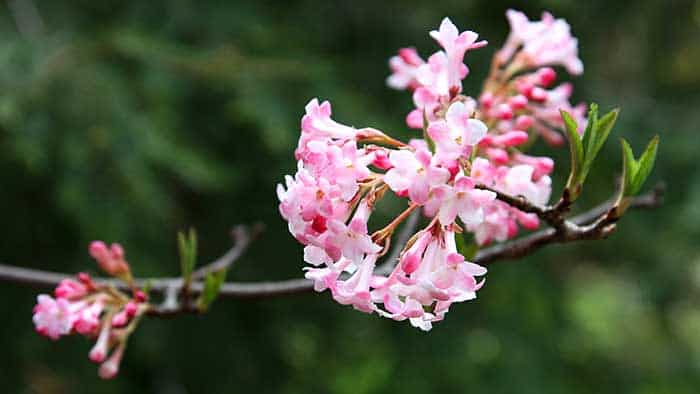
Often gardeners in the early days of spring have an impulse to apply fertilizer to help plants restore themselves, but acting too quickly can sometimes interfere with what they really want.
Plants make their own food through photosynthesis, and they really don’t benefit if I rush around with emergency meals. Their biology is capable of manufacturing basic carbohydrate energy by using minerals gathered from soil combined with sunlight. I don’t need to satisfy all their nutritional requirements with fertilizer, although just a little fertilizer, applied at the appropriate time, can build good health, encourage sturdy growth, and enhance ornamental characteristics such as flowers and fruiting.
Sometimes, applying fertilizer at the wrong time can set plants back. A patchy lawn may look like it could use some help, but grass plants know what to do in early spring. First, they need to grow new roots to replace those lost every winter, ensuring they can reach ground water during summer droughts. If I apply nitrogen fertilizer to the lawn this early in the season, I’ll be forcing grass plants to grow blades instead of roots, setting up a potentially dangerous circumstance for later in summer. With shortened root systems, the lawn will be vulnerable to drought and thin out, leaving room for weeds to invade. By waiting until May to feed the lawn, grass plants will have had time to grow their new longer roots and be ready to get on with vigorous blade growth. When summer heat and drought hit, the lawn will be strong enough to go dormant and wait for eventual rain.
A different strategy is needed for dealing with woody plants that are already a bit too aggressive for their locations. My large forsythias and viburnums are already growing over my head, and I’d like to keep them from reaching 10 feet (3 m). I want to encourage them to set maximum flower buds for next season, but fertilizing now would encourage new, high-reaching wood with lots of flower buds. But when should I feed without making them shoot up to the sky?
Like all plants, flowering shrubs want to expend their greatest amount of stored energy in spring by flowering and then getting on with making new vertical wood that will carry next year’s flower buds. If I fertilize them now, before they flower, I’ll be giving them an extra-large burst of energy for new wood growth, sending them up even higher. I want my fertilizer meal to go mostly toward flower bud production, so I’ll hold off until late spring. I’ll also prune them back a bit immediately after flowering (before next year’s buds are set) and let them spend their energy putting on new growth. By feeding during the period when wood is immature and next year’s buds are forming, my hope is that I will up the flower count for next spring, but still keep them to a more manageable height.
Of course, no one really knows what plants will do when responding to all the influences of changing seasons, but I try to stay one step ahead of them when it comes to doling out the free fertilizer meals.

The article was very timely, thank you! After just buying lawn fertilizer I was very keen to use it. Now know I should wait, and I will!